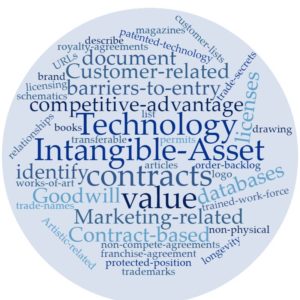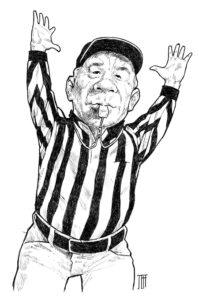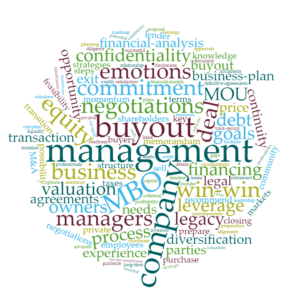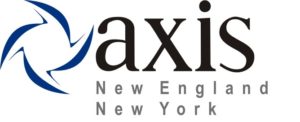Profit from Intangible Assets in a Business Sale
 The sale of a business includes intangible assets. This article explains what intangible assets are and how articulating, supporting and protecting them enhances business sale outcomes. Let’s get started.
The sale of a business includes intangible assets. This article explains what intangible assets are and how articulating, supporting and protecting them enhances business sale outcomes. Let’s get started.
What is an Intangible Asset?
Intangible assets are things that are non-physical in nature that you can identify, describe, document (e.g. a contract, list, logo, drawing or schematic) and, most importantly, transfer. Intellectual property is an example of an intangible asset.
The Financial Accounting Standards Board (FASB), in its ASC 805 standard for reporting of Business Combinations, separates intangible assets into these categories:
- Marketing-related: such as trade names, trademarks, non-compete agreements and URLs
- Customer-related: customer lists, contracts and relationships, order backlog
- Artistic-related: works of art, magazines, books and articles
- Contract-based: permits and licenses, licensing and royalty agreements, franchise agreements
- Technology-based: trade secrets, databases, patented technology
Do all intangible assets have value?
Just because an intangible asset exists, doesn’t automatically give it economic value. To have value it has to produce some form of economic benefit. For example:
- Generate operating or licensing income
- Reduce operating expenses or future capital spending
- Reduce business risk
Of course, an intangible asset must be transferable in a sale to have value to a new owner. (Intangible asset valuation is a topic for another day.)
Goodwill is excluded from the above list because it is considered to be a blended residual asset. Goodwill is influenced by factors such as high profit margins, barriers to market entry, competitive advantages, a regulated protected position or lack of regulation, longevity in the market, a trained work force, etc. Synergistic value associated with premiums paid by strategic buyers are often considered “blue sky” value above a “justifiable” goodwill value.
Document to Impress
After you take an inventory of your company’s intangible assets, the next step is to be sure that the key ones are documented in a manner that will satisfy buyers. For example, support for customer-based intangibles may include: a well-populated CRM database, master supply agreements, vendor quality audit records, open quote files, important correspondence, sales and contribution margin by customer history, AR aging schedules, purchase orders, etc.
Protect Your Assets
While documenting your company’s primary intangible assets, you are likely to uncover some that need better protecting through public registration (e.g. patents), securing or improving contracts, or better restricting access.
For many of our clients, trade secrets are their most valuable intangible assets. Suppose a significant portion of your company’s profitability is attributable to a proprietary production process. Ask yourself these questions: Is the process perfected and well documented? Are you taking appropriate measures to keep the process secret? Is access sufficiently limited? Do you have appropriate data security? Do you have non-disclosure agreements with third parties? Do you have confidentiality agreements with your employees? If not, you know what to do.
Capitalizing on Intangible Assets in a Sale Process
Your intangible assets become the focal point of the Confidential Information Memorandum (CIM) prepared by your M&A advisor. The CIM can also articulate those intangibles that are underutilized and have potential to produce economic benefits to a new owner. We use our knowledge of your intangible assets to decide which target strategic acquirers are likely to derive the greatest benefit from them. We tailor our outreach strategy and communications accordingly. In the end, this generates more interest and better offers for the company in an M&A auction process. The M&A advisor can also advise on how and when to disclose sensitive details about key intangible assets during the discovery and due diligence phases of a merger or acquisition process.
* * *
An investment in perfecting, identifying, documenting and protecting intangible assets is usually well rewarded in a sale. Exit Strategies helps clients take full advantage of the intangible assets in their businesses when going to market. If you’d like help in this regard or have any questions, you can reach Al Statz at 707-781-8580 or alstatz@exitstrategiesgroup.com.

 A Phase I environmental site assessment is commonly required by buyers and lenders in merger and acquisition transactions that include commercial real estate. One may even be called for when the target company (seller) uses or stores hazardous materials at a leased facility.
A Phase I environmental site assessment is commonly required by buyers and lenders in merger and acquisition transactions that include commercial real estate. One may even be called for when the target company (seller) uses or stores hazardous materials at a leased facility. Sitting down and writing quality articles on business valuation, exit planning, mergers and acquisition strategy has taken a back seat this year, thanks to a strong M&A market. In this post I will recap many of the transactions for which Exit Strategies (ESGI) provided sell-side advisory services during the first half of 2019.
Sitting down and writing quality articles on business valuation, exit planning, mergers and acquisition strategy has taken a back seat this year, thanks to a strong M&A market. In this post I will recap many of the transactions for which Exit Strategies (ESGI) provided sell-side advisory services during the first half of 2019. Many sellers worry that employees might “hit the panic button” when they learn that a business is up for sale. Yet, in a recent article from mergers and acquisitions specialist Barbara Taylor entitled, “Selling Your Business? 3 Reasons Why Your Employees Will Be Thrilled,” Taylor brings up some thought-provoking points on why employees might actually be glad to hear this news. Let’s take a closer look at the three reasons that Taylor believes employees might actually be pretty excited by the prospect of a sale.
Many sellers worry that employees might “hit the panic button” when they learn that a business is up for sale. Yet, in a recent article from mergers and acquisitions specialist Barbara Taylor entitled, “Selling Your Business? 3 Reasons Why Your Employees Will Be Thrilled,” Taylor brings up some thought-provoking points on why employees might actually be glad to hear this news. Let’s take a closer look at the three reasons that Taylor believes employees might actually be pretty excited by the prospect of a sale. Business owners who choose the MBO
Business owners who choose the MBO  Unfortunately, the probable selling price fell slightly short of what the client needed to retire (after taxes). We identified excessive inventory as one of the factors that was limiting enterprise value. How did inventory reduce value and spoil our client’s exit strategy? What can they do resolve this limitation? Read on for the full story.
Unfortunately, the probable selling price fell slightly short of what the client needed to retire (after taxes). We identified excessive inventory as one of the factors that was limiting enterprise value. How did inventory reduce value and spoil our client’s exit strategy? What can they do resolve this limitation? Read on for the full story. Axis, with facilities in Danvers Massachusetts and Rochester New York, is a leading provider of advanced industrial automation products and engineered systems, specializing in robotics, motion controls, machine vision, sensors and IIOT technologies. Axis, an authorized distributor for many premier automation brands, helps clients in many industries automate their products and processes. Value-added assembly and custom-engineered mixed-technology systems feature prominently in the company’s value proposition. Founded in 1994 by Todd Clark, Axis is the market leader in New England and New York, and one of the largest independent automation technology providers in the U.S. Industries served by Axis include life sciences, pharmaceutical and biotech, medical, semiconductor, electronics, food and beverage, warehouse automation, packaging, machine tools, 3D printing and robotics.
Axis, with facilities in Danvers Massachusetts and Rochester New York, is a leading provider of advanced industrial automation products and engineered systems, specializing in robotics, motion controls, machine vision, sensors and IIOT technologies. Axis, an authorized distributor for many premier automation brands, helps clients in many industries automate their products and processes. Value-added assembly and custom-engineered mixed-technology systems feature prominently in the company’s value proposition. Founded in 1994 by Todd Clark, Axis is the market leader in New England and New York, and one of the largest independent automation technology providers in the U.S. Industries served by Axis include life sciences, pharmaceutical and biotech, medical, semiconductor, electronics, food and beverage, warehouse automation, packaging, machine tools, 3D printing and robotics.

 1. The business valuation has to be realistic and defensible
1. The business valuation has to be realistic and defensible



